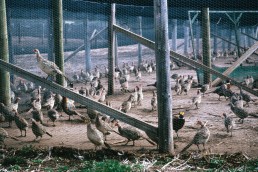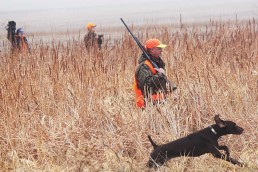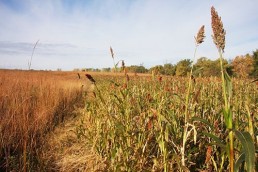Five Widespread Myths About Pheasant and Quail Populations
SHARE THIS POST
Not only are certain myths about pheasant and quail populations prevalent, belief in them takes the focus of what can really have an impact on sustainable bird numbers – the creation and management of upland habitat. Here’s a closer look at five widely-held beliefs about America’s most popular upland gamebirds.
Myth: Stocking pheasants works to restore wild populations.
Busted: During the last half century, there has been a colossal amount of money spent on supplemental stocking programs by state and local governments, sportsman’s groups and private individuals. Countless studies have shown that stocked pheasants, no matter when they are released, have great difficulty maintaining self-sustaining populations. Predators take the main toll, accounting for 90 percent of the deaths; at the same time, predators are conditioned to the idea that pheasants are an easy target.
Pen-raised birds do provide shooting opportunities and are a good way to introduce new hunters to hunting in a controlled situation; they’re also handy for training dogs. But the bottom line is stocking pen-raised pheasants will not effectively increase wild pheasant populations. Only by addressing the root problem that is suppressing populations – the availability and quality of upland habitat – can a long-term positive impact be made on pheasant numbers.
Myth: Predators are the main reason there are fewer pheasants and quail.
Busted: Yes, coyotes and fox will eat pheasants and quail, and raccoons and skunks are likely culprits when it comes to raided nests. But predators don’t eat habitat, which is far and away the biggest reason why pheasant populations decline. High annual losses to predators should not be misunderstood to mean that predation is responsible for long-term upland population declines. Landscapes with good habitat often have high numbers of pheasant numbers, as well as high numbers of many potential predators.
The impact of predators is magnified and often pinpointed as the primary problem after habitat conditions deteriorate. Confine pheasants and quail to smaller and smaller parcels of habitat, and a predator’s job gets a whole lot easier. Thankfully, well-designed habitat projects can reduce predation by up to 80 percent. Through the addition and management of habitat, not only does there tend to be a decrease in the impact predators make on existing nests, but more habitat is likely to increase the number of nests and the overall gamebird population. And habitat for pheasants and quail comes at a fraction of the cost of other intensive predator reduction methods that are cost-prohibitive across a large area.
Myth: Turkeys eat quail chicks.
Are you enjoying this post?
You can be among the first to get the latest info on where to go, what to use and how to use it!
Busted: A single Florida study from the 1930s noted an instance of turkeys destroying quail eggs. No biological study since has documented turkeys damaging quail nests or feeding on chicks. Turkey researchers have not found a single quail chick or egg fragment while examining thousands of turkey stomachs. In addition, scientists monitoring quail chicks fitted with radio transmitters and watching quail nests via remote cameras have yet to catch a turkey in the act. Given that literally hundreds of studies of wild turkey food habits and predation on quail have been conducted over the past 80 years, the lack of evidence is remarkable. The conclusion is that turkeys have no direct role in the decline of quail.
Myth: Hunting is hurting pheasant numbers.
Busted: Extensive research has shown hunting has little-to-no effect on pheasant reproduction and populations. Hens and roosters are easily distinguished in wingshooting situations, and because hens are protected through game regulations, pheasants are actually managed much more conservatively than many other gamebirds. And because roosters are polygamous – that is, they will mate with multiple hens – hunting in effect is only removing a “surplus” of males not absolutely necessary for reproduction the following spring.
Most of a pheasant season’s harvest takes place during the opening weekend, sometimes as much as 50 percent. Additionally, the majority of pheasant hunters are most active during the first two weeks of the season. Considering these factors, liberal, lengthy, roosters-only seasons do not harm populations.
Myth: Habitat isn’t the biggest key to healthy pheasant and quail populations.
Busted: Two factors affect upland bird populations above all others: habitat and weather. And while we can’t control the weather, we can influence the amount and quality of upland habitat. Habitat is what supports strong and healthy pheasant and quail populations – one need only look at how pheasant populations rose in the late 1980s, 1990s and 2000s coinciding with increases in Conservation Reserve Program upland acreage, and their subsequent decreases as those acres diminished. Historically, a lot of money has been spent trying to stock pheasants and to battle predators. Had these dollars been invested in habitat restoration, pheasants, quail and other upland wildlife would’ve benefitted.
MWO
SHARE THIS POST
Did you enjoy this post?
You can be among the first to get the latest info on where to go, what to use and how to use it!
MWO
We believe being outdoors is good. With more than 1,000 articles each year, MidWest Outdoors magazine is all about sharing outdoor experiences with you—where to go, what to use and how to use it… whether you’re close to home or on that trip of a lifetime.



